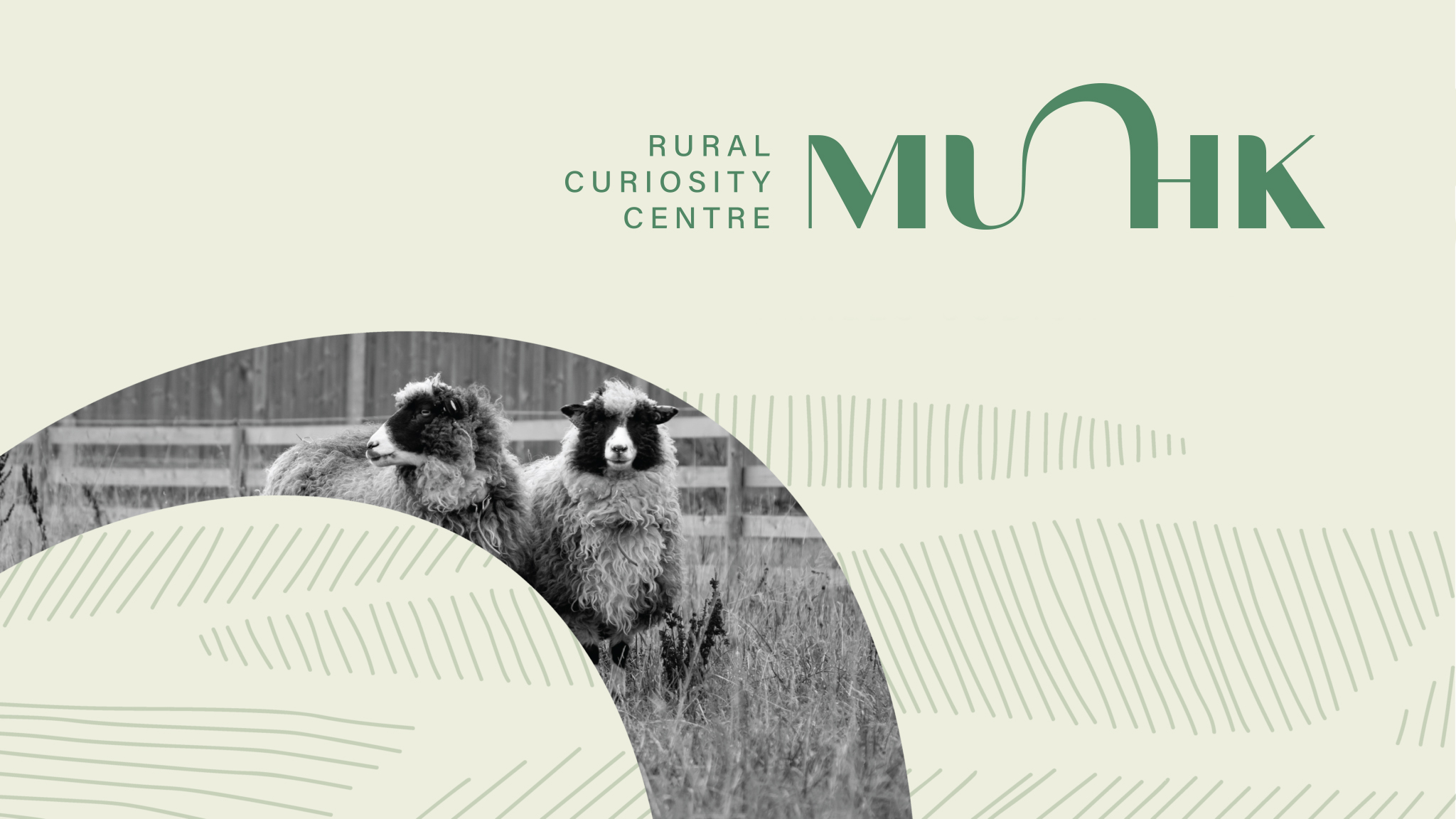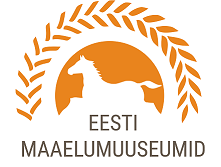
Do animals have a digital age too?
Why give a toy to a pig?
Does a free-range chicken lay golden eggs?
Human rights for people – animal rights for animals?
How do cows deal with stress?
Is feeding animals a fine-tuned science?
What will animals eat in the future?
You’ll find answers to these and many other fascinating questions at MUHK – the Rural Curiosity Center (at Estonian Agricultural Museum) – where both children and adults can explore, discover, and enjoy hands-on experiences.
Where are we located?
The story begins with manor owner Peeter Muna, who dreamed of something more than an ordinary cattle barn. Inspired by his travels abroad, he had a barn for 200 cows built here in 1913. The complex included a milk cellar, boiler room, dishwashing area, and storage for feed. An early steam engine powered automatic waterers, and small railcars on tracks transported milk, manure, and feed with ease.
At the time, this was considered a groundbreaking innovation—so advanced that people came from across Estonia and Europe just to see it.
That’s why it makes perfect sense to open the Rural Curiosity Center here, in what was once a marvel of agricultural progress.
First Floor
NEW permanent exhibition: “Barn Symphony” – Can harmony exist between humans and farm animals?
Imagine a perfectly tuned orchestra – every instrument playing in balance, rhythm and melody in harmony. That’s the ideal of barn life too, where cows, pigs, sheep, and laying hens form their own unique “ensemble” and the human plays the role of conductor.
The Estonian Agricultural Museum’s new exhibition “Barn Symphony” explores the wellbeing of farm animals through the metaphor of music. What conditions must humans create for animals to be healthy and content – so they "play" together like a well-led orchestra?
What happens when one instrument is out of tune? Does a stressed sheep bleat differently? How does a chicken feel if it can’t stretch its wings?
Come and discover whether it’s possible to compose the “score” of a happy farm and what roles both humans and animals play in it.
“Barn Symphony” invites you to listen, look, touch, and think along.
New exhibition: “Manure and Milk. A Cow’s Life Mission Through Time”
Two things that may seem opposite – manure and milk – have actually shaped Estonia’s agricultural story hand in hand. Fertile fields fueled by manure made Estonian rye famous across Europe for centuries. From the 19th century onward, dairy products like butter and cheese turned Estonia into a milk-producing powerhouse.
Through the exhibition “Manure and Milk. A Cow’s Life Mission Through Time,” MUHK offers a glimpse into history: why manure was once called a farmer’s “gold,” and why the clinking of milk cans was a familiar morning sound in Estonian villages.
You’ll learn how Estonia became a milk nation that supplied cities like St. Petersburg, and why June was once celebrated with manure-spreading communal events.
Come explore how milk and manure have shaped rural life for centuries – after all, this is where both farmers’ wealth and our food begin.
Live Animals at the Rural Curiosity Center – Who Lives Here?
Have you ever watched goats leap with joy, made friends with a pony, or seen how geese fiercely protect their turf?
On the first floor of the Rural Curiosity Center, you’ll meet real farm animals – goats, ponies, rabbits, sheep, chickens, roosters, geese, quails, ducks, and turkeys – all part of daily life and the diversity of the countryside.
🐑 Why are sheep the perfect natural lawnmowers, and why do they love salt licks?
🐴 Did you know that a pony can sleep both lying down and standing up?
🐓 How many pecking motions does a chicken make each day just to find food?
🦃 Can a turkey’s call really be heard from more than a kilometer away?
Here you’ll discover what these animals eat, how they’re cared for, and what they provide for people. Come listen, observe, and experience rural life up close – because the best way to understand animals is to look them in the eye.
Second Floor
“Veterinarian’s Room” – How Has Animal Care Changed Over Time?
When did humans start treating animals?
A simple answer: when they domesticated them.
Animal medicine evolved alongside human medicine.
Archaeological findings suggest that veterinary procedures may have been practiced as far back as 5,000 years ago, though veterinary science is much younger. So who treated animals before science existed? How did contagious diseases affect entire herds, and what treatments were used centuries ago?
What do mad cow disease, bird flu, and African swine fever really look like? These are ancient diseases still treated today in surprisingly similar ways as in the Middle Ages.
The Veterinarian’s Room at the Estonian Agricultural Museum takes you on a journey through the development of animal medicine – from early herbal remedies and magical chants to the rise of modern veterinary science.
📜 Did you know that the Sumerians recorded animal diseases and treatments 5,000 years ago?
🌿 What herbs were used before antibiotics?
🐄 Why did people once fear animal diseases more than storms?
You’ll see how animal care evolved with human knowledge and how Estonian veterinary medicine began at the University of Tartu over 200 years ago.
Step into the Veterinarian’s Room and explore a world where animals were healed with spells, plants, and science. Discover how animal health is linked to all our lives.
Open Storage – Step into the Museum’s Treasure Chamber!
Have you ever wondered where museums keep all their most fascinating items that aren’t always on display? At MUHK’s open storage, you’ll step into a treasure trove – a place where history is fully alive.
🚜 What tools did farmers use before tractors came along?
🥣 What food was eaten by peasants and what by nobles over the past century?
🔍 What did washing machines or flat irons look like 100 years ago?
The open storage of the Estonian Agricultural Museum displays rare tools used in farming – from plowing fields to growing crops – along with smart and practical household inventions.
In the center, a large artificial dining table brings together aristocratic delicacies and humble peasant meals, showing how Estonia’s food culture has evolved from 1900 to today.
When you enter open storage, you experience a different side of the museum – one where history isn’t hidden away, but opens up right before your eyes.
Come explore what agricultural treasures the museum holds in store!

